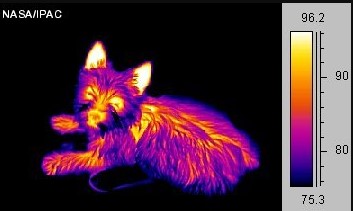1.1 The electromagnetic spectrum
You know that the light you see can be split up into the colours of the rainbow, just as in the stellar spectra shown in Figure 2. If you have a prism, a clear precious stone in a ring, or even a watch face with sharp edges, you can often see this effect – your ring or watch will throw rainbows onto a wall if it catches bright sunlight at the right angle.
In reality, however, the colours don’t stop with red and violet. Light extends further in both directions – it’s just that our eyes are not sensitive to those colours. The Sun emits most of its light in colours from red to violet, so our eyes evolved accordingly. The whole spread of different colours of light, those we can see as well as those we can’t, is called the ‘electromagnetic spectrum’.
Much of what we know about the coolest stars comes from looking at the part of the spectrum after the colour red. This is aptly named the ‘infrared’ region. You come across infrared ‘light’, or radiation, quite often in day-to-day life. For example, it’s what browns your toast; it’s what allows naturalists on television to show videos of animals and birds at night. Infrared-sensitive cameras track the heat from their bodies, rather than relying on sunlight to illuminate them.
The infrared is very useful for scientists who want to look at cool M-type stars, and also at planets. We’ve already said the Sun emits most of its light in the visible part of the electromagnetic spectrum. Cooler stars emit most of their light in the infrared instead. Other things at moderate temperatures, like humans and the dog in Figure 3, also emit infrared light.

